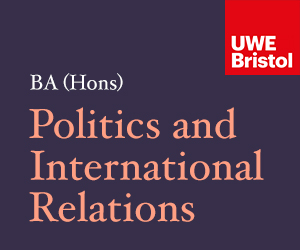Quid pro CO2: The Era of Carbon Conditionality
At Copenhagen in December 2009, during the much-hyped leaders’ summit to negotiate a climate change deal, American hypocrisy met Chinese obstructionism. Americans demanded emissions reductions without a credible plan at home. According to most reports, the Chinese stripped the Copenhagen Accord of much of its early ambition, including seemingly distant commitments to 2050. The West plans carbon conditionality. The rest expect reciprocity, and some countries will be in a position to demand it.
Water Insecurity in the Middle East: a Cause for Conflict or Cooperation?
The Middle East is a very complex region with many factors causing states to enter into violent and intractable conflicts. The region has been adversely affected by climate change. This has led to the entire Middle East becoming dryer, thus meaning that water volumes, be it in aquifers or river basins, are declining. Therefore, water scarcity is steadily affecting food supply.
The advocacy politics of NGOs: shaping society to respond to climate change
In his seminal article The Tragedy of the Commons, Garret Hardin described a dilemma whereby individuals, acting independently and in rational pursuit of their own self-interest, will ultimately destroy shared, limited resources, even when it is accepted that this is not in anyone’s long-term interests. Today, climate campaigners see this unfolding before their eyes. But what does it mean for the study of advocacy politics?
Not quite the end of the Third World?
One of the few things to catch the imagination out of last December’s UN climate conference in Copenhagen certainly was Tuvalu, standing up to make a desperate plea for its continuing existence. But despite Clive Hamilton’s claim that this marks the ‘tectonics plates’ shifting and a rift emerging within the Third World, it is more likely that Tuvalu’s actions will come to be little more than a wistful memory.
The End of the Third World
For half a century, the Third World remained united in the face of a common threat, the influence of the United States and, to a lesser extent, the Soviet Union. But for least developed countries a greater enemy has now emerged, the threat to their survival posed by global warming, and they are no longer willing to subsume their demand that all the world’s polluters curb their activities beneath the imperative of maintaining the appearance of G77 unity.
The Irrelevance of Climate-Gate, and the Political Economy of Climate Change
If there is no consensus on an international agreement on climate change, it will not be due to some irrelevant ‘-Gate’, but rather, due to the political economy of climate change. What this particular ‘-Gate’ has done is mar the scientists, not the science supporting climate change.
The politics of climate change
Efforts to combat climate change will proceed apace regardless of Copenhagen; indeed, the possible shortcomings of the summit should not detract from the task that national governments have already embarked upon and will continue to face over the decades to come. This is because globalisation means that problems are precisely that: global.
Climate change and security politics
This past weekend, The New York Times ran an interesting story, “Climate Change Seen as Threat to U.S. Security.” The entire article was obviously provocative as it created a bit of a stir in the blogosphere.
The international politics of peak oil and energy policy
The abrupt rises in oil prices in recent years coupled with worry about the long-term viability of a fossil-based economy have prompted some writers to foretell the coming of a ‘new dark age’ of Malthusian proportions. Very little appears to abate the current and soaring demand for oil, even as world oil production reaches it peak.
Culture and Global Environmental Governance: Harnessing the Power of Habits
Cultural dynamics reside at the heart of global environmental governance. The politics of the environment is – alongside questions of distribution/justice and physical sustainability – always a matter of meaning and purpose. And this should not come as a surprise.



